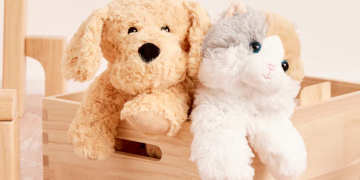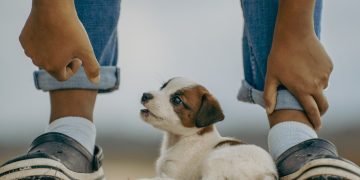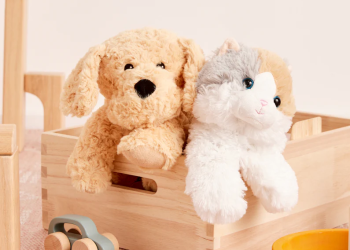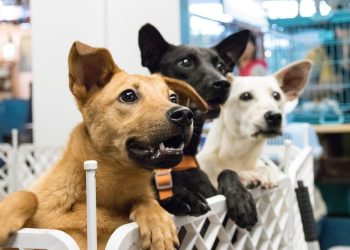Pet anxiety is a common issue that affects animals of all breeds and ages. Whether triggered by separation, loud noises, or unfamiliar environments, anxiety can negatively impact your pet’s well-being and behavior. Understanding the causes, recognizing the signs, and implementing effective strategies can help alleviate your pet’s stress and create a calmer, happier life for them.
Understanding Pet Anxiety
Common Causes of Pet Anxiety
- Separation Anxiety: Fear of being left alone is one of the most common triggers, especially in dogs.
- Loud Noises: Thunderstorms, fireworks, and other loud sounds can be overwhelming.
- Unfamiliar Environments: New places, people, or animals may provoke fear or stress.
- Past Trauma: Pets with a history of abuse, neglect, or abandonment are more likely to experience anxiety.
- Changes in Routine: Moving, a new family member, or schedule changes can disrupt a pet’s sense of security.
Breeds Prone to Anxiety
While any pet can develop anxiety, some breeds are more predisposed. For example:
- Dogs: Labrador Retrievers, German Shepherds, and Border Collies.
- Cats: Siamese and Burmese cats often show heightened sensitivity to environmental changes.
Recognizing Signs of Anxiety in Pets
Behavioral Indicators
- Excessive Barking or Meowing: Vocalizing more than usual, especially when left alone.
- Destructive Behavior: Chewing furniture, digging, or scratching surfaces.
- Pacing or Restlessness: Difficulty settling down or repetitive movements.
Physical Symptoms
- Shaking or Trembling: A clear sign of distress, particularly during loud events like thunderstorms.
- Excessive Drooling or Panting: Signs of stress often seen in dogs.
- Changes in Appetite: Refusing to eat or overeating due to anxiety.
Other Signs
- Hiding: Cats may hide under furniture, while dogs might seek a confined space.
- Excessive Grooming: Licking or chewing paws to the point of causing skin irritation.
- Aggression: Fear-induced aggression toward people or other animals.
Immediate Steps to Calm an Anxious Pet
Create a Safe Space
- Designate a quiet, comfortable area where your pet can retreat when they feel anxious.
- Use familiar items like their bed, toys, or a blanket with your scent.
Remain Calm
- Your behavior can influence your pet’s emotional state. Stay calm and speak in soothing tones.
- Avoid overreacting to their anxiety, as this may reinforce their fears.
Use Calming Products
- Pheromone Diffusers: Mimic natural calming signals to reduce stress.
- Anxiety Wraps: Pressure-based garments like Thundershirts can provide comfort.
- Natural Remedies: Consult your veterinarian about calming supplements or sprays.
Long-Term Strategies for Managing Pet Anxiety
Behavior Modification
- Desensitization: Gradually expose your pet to their triggers in a controlled manner to reduce their sensitivity.
- Example: Play recordings of thunder at a low volume and gradually increase it over time.
- Counterconditioning: Replace fearful reactions with positive behaviors by rewarding calm responses.
Consistent Routine
- Pets thrive on routine. Stick to consistent feeding, exercise, and play schedules to reduce uncertainty.
Adequate Exercise
- Regular physical activity helps expend excess energy and reduces stress levels.
- Tailor activities to your pet’s breed and energy level, such as long walks for dogs or interactive toys for cats.
Socialization
- Gradual exposure to new people, animals, and environments can build confidence and reduce anxiety.
- Use positive reinforcement to reward calm behavior during social interactions.
Professional Help
Veterinary Consultation
- Rule out medical issues that may mimic or exacerbate anxiety symptoms.
- Your vet may recommend prescription medications for severe cases.
Training and Behavior Therapy
- Work with a certified trainer or animal behaviorist to address specific anxiety triggers.
- Group training classes can help dogs build confidence in social settings.
Handling Specific Anxiety Triggers
Separation Anxiety
- Practice Short Departures: Leave your pet alone for brief periods and gradually increase the duration.
- Provide Distractions: Offer puzzle toys or treat-dispensing devices to keep them occupied.
- Don’t Make a Fuss: Avoid dramatic goodbyes or greetings to minimize emotional responses.
Noise Anxiety
- Noise Masking: Use white noise machines, fans, or calming music to drown out loud sounds.
- Comfort Items: Provide toys or blankets that your pet associates with safety.
- Safe Crate Training: If your pet finds comfort in a crate, make it cozy and accessible.
Travel Anxiety
- Acclimation: Gradually introduce your pet to car rides or carriers before long trips.
- Comfort Measures: Use seat belts, carriers, or calming aids to make travel less stressful.
- Frequent Breaks: Stop for water, bathroom breaks, and reassurance during long journeys.
Preventing Anxiety in Pets
Early Socialization
- Introduce your pet to a variety of experiences, people, and environments during their formative months.
- Positive exposure can reduce fear of new situations later in life.
Positive Reinforcement
- Reward calm behavior to encourage confidence and trust.
- Avoid punishing anxious reactions, as this can worsen fear and confusion.
Regular Health Checkups
- Routine veterinary visits ensure your pet’s overall health, as underlying conditions can contribute to anxiety.
Monitoring Progress
Keep a Journal
- Document your pet’s triggers, symptoms, and responses to interventions.
- Share this information with your vet or trainer to refine their treatment plan.
Celebrate Small Wins
- Acknowledge progress, even if it’s gradual. Each step toward reduced anxiety is a success.
Pet anxiety can be challenging, but with patience, understanding, and the right strategies, you can help your pet feel more secure and at ease. A calm, confident pet is a happier companion, enriching the bond you share.












